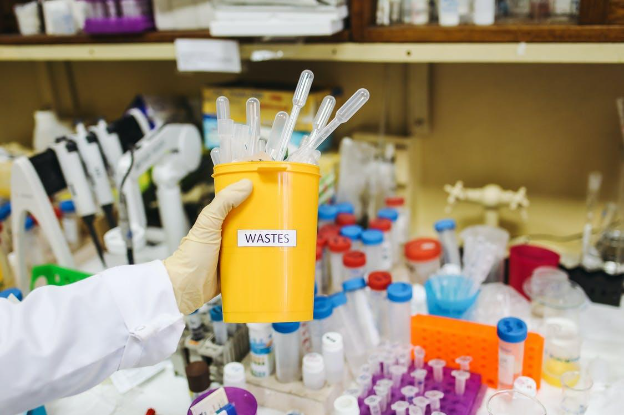
Medical waste management is an essential component of healthcare practices. No matter what type of generator (from large to small quantity generators) you employ in your facility, improper disposal and treatment of medical waste can have severe repercussions on your team, the public, and the environment. This consolidated guide aims to provide hazardous waste generators with strategic insights on how to reduce medical waste, efficiently manage generation, and uphold eco-friendly practices.
Understanding Medical Waste
Medical waste is not just about used syringes and bloody gauze. According to the Centers for Disease Control (CDC), merely 3-5% of all medical waste is subject to hazardous waste regulations. Due to the high cost associated with such disposal – up to 10 times the regular waste cost – it's pivotal for institutions to recognize the difference between conventional and regulated waste.
OSHA defines medical waste subject to regulation to include:
- Liquid or semi-liquid blood or other potentially infectious material (OPIM).
- Items contaminated that could release OPIM under certain conditions.
- Contaminated sharps.
- Pathological and microbiological wastes with blood or OPIM.
Effectively segregating waste based on this definition can result in significant cost savings.
Strategies to Minimize Medical Waste
1. Evaluation of Current Practices: Initiate by understanding your facility's present waste management approach. Perform a waste audit to spotlight improvement areas, and make evidence-based modifications.
2. Waste Segregation: Implement a color-coded waste segregation system. This ensures hazardous materials are correctly classified, reducing the volume and cost associated with medical waste disposal.
3. Limit Red Bags: Make red bags, designated for hazardous waste, less accessible in general zones like patients rooms to reduce misuse. If they're essential, opt for smaller containers and place them distinctively apart from regular trash bins.
4. Staff Training: Regularly conduct training sessions to ensure that everyone knows the difference between regular trash and regulated medical waste.
5. Reusables and Recyclables: Embrace the use of reusable supplies like washable linens and sterilizable instruments. Also, explore recycling opportunities for items in healthcare, even if they aren't categorized as medical waste.
6. Purchase with a Conscience: Select eco-friendly alternatives when procuring medical supplies. Look for biodegradable, recyclable materials or those with minimal packaging.
7. Efficient Inventory Management: Avoid overstocking and use identification numbers to manage the waste streams for listed waste materials. An optimized inventory system leads to medical waste reduction by avoiding medical supply expirations.
8. Pharmaceutical Waste Program: Given the hazardous nature of pharmaceutical waste, have a system in place that handles the storage, segregation, and disposal of expired or unused medications.
9. Encourage Green Disposal: Set up recycling and composting programs for non-medical waste. This not only reduces the amount of waste but also contributes positively to the environment.
10. Regular Policy Review: Stay updated with advancements in medical waste management. Modify facility policies to reflect current best practices and regulations.
11. Partner with Experts: Collaborate with reputable medical waste services, like United Medical Waste Management, that mirror your commitment to eco-friendly practices.
Conclusion
Healthcare facilities play a pivotal role in fostering eco-friendly practices. By integrating the strategies mentioned above, they can significantly reduce medical waste, streamline the management of hazardous waste generators, and make substantial contributions to a healthier planet. It's more than just an operational change – it's a call to uphold our responsibility to the environment and future generations. If you seek a dependable medical waste service partner, consider reaching out to experts in the field, ensuring your waste management aligns with the highest standards of safety and eco-responsibility.
